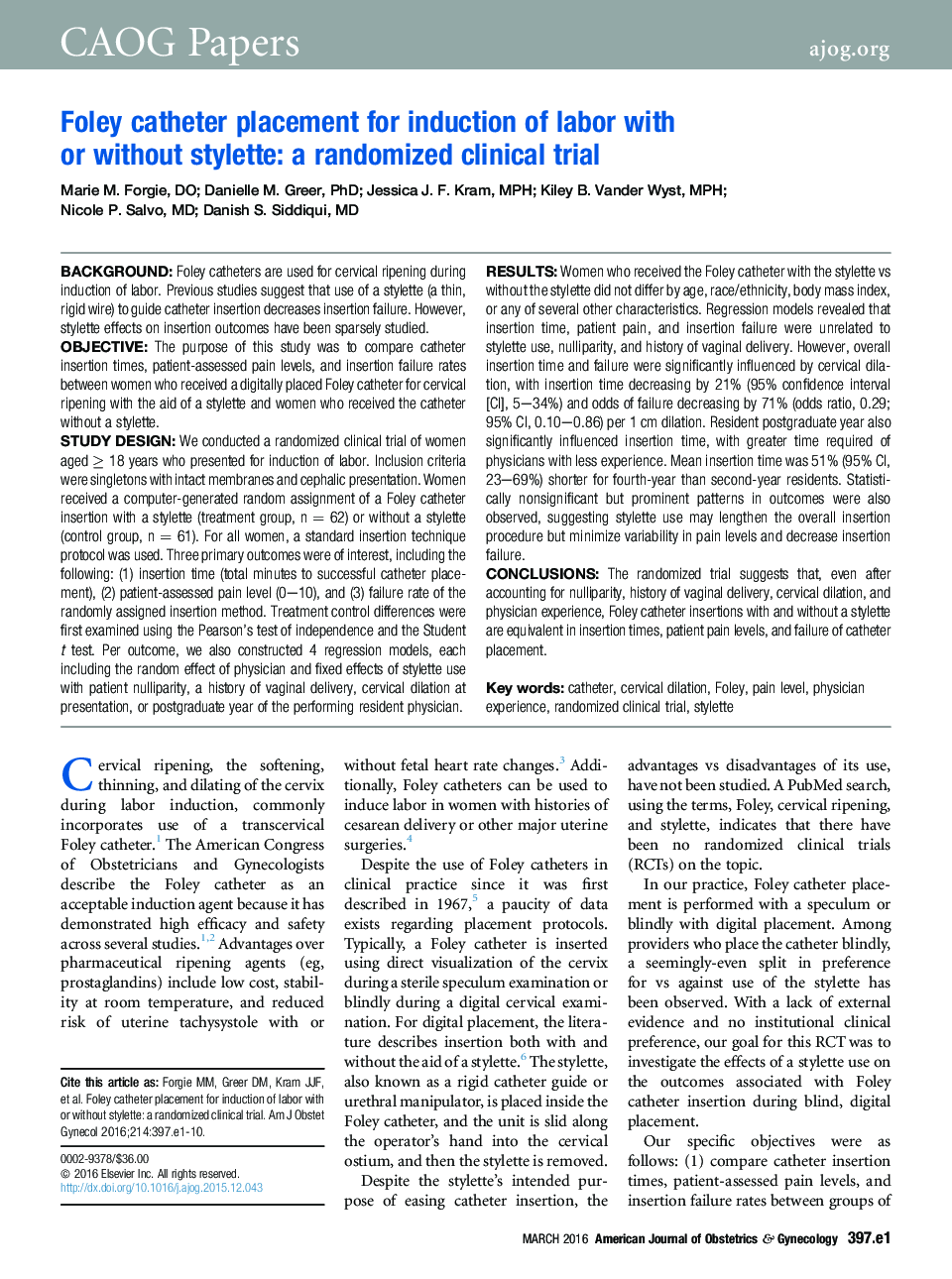| کد مقاله | کد نشریه | سال انتشار | مقاله انگلیسی | نسخه تمام متن |
|---|---|---|---|---|
| 6144718 | 1594894 | 2016 | 10 صفحه PDF | دانلود رایگان |
BackgroundFoley catheters are used for cervical ripening during induction of labor. Previous studies suggest that use of a stylette (a thin, rigid wire) to guide catheter insertion decreases insertion failure. However, stylette effects on insertion outcomes have been sparsely studied.ObjectiveThe purpose of this study was to compare catheter insertion times, patient-assessed pain levels, and insertion failure rates between women who received a digitally placed Foley catheter for cervical ripening with the aid of a stylette and women who received the catheter without a stylette.Study DesignWe conducted a randomized clinical trial of women aged ⥠18 years who presented for induction of labor. Inclusion criteria were singletons with intact membranes and cephalic presentation. Women received a computer-generated random assignment of a Foley catheter insertion with a stylette (treatment group, n = 62) or without a stylette (control group, n = 61). For all women, a standard insertion technique protocol was used. Three primary outcomes were of interest, including the following: (1) insertion time (total minutes to successful catheter placement), (2) patient-assessed pain level (0-10), and (3) failure rate of the randomly assigned insertion method. Treatment control differences were first examined using the Pearson's test of independence and the Student t test. Per outcome, we also constructed 4 regression models, each including the random effect of physician and fixed effects of stylette use with patient nulliparity, a history of vaginal delivery, cervical dilation at presentation, or postgraduate year of the performing resident physician.ResultsWomen who received the Foley catheter with the stylette vs without the stylette did not differ by age, race/ethnicity, body mass index, or any of several other characteristics. Regression models revealed that insertion time, patient pain, and insertion failure were unrelated to stylette use, nulliparity, and history of vaginal delivery. However, overall insertion time and failure were significantly influenced by cervical dilation, with insertion time decreasing by 21% (95% confidence interval [CI], 5-34%) and odds of failure decreasing by 71% (odds ratio, 0.29; 95% CI, 0.10-0.86) per 1 cm dilation. Resident postgraduate year also significantly influenced insertion time, with greater time required of physicians with less experience. Mean insertion time was 51% (95% CI, 23-69%) shorter for fourth-year than second-year residents. Statistically nonsignificant but prominent patterns in outcomes were also observed, suggesting stylette use may lengthen the overall insertion procedure but minimize variability in pain levels and decrease insertion failure.ConclusionsThe randomized trial suggests that, even after accounting for nulliparity, history of vaginal delivery, cervical dilation, and physician experience, Foley catheter insertions with and without a stylette are equivalent in insertion times, patient pain levels, and failure of catheter placement.
Journal: American Journal of Obstetrics and Gynecology - Volume 214, Issue 3, March 2016, Pages 397.e1-397.e10
